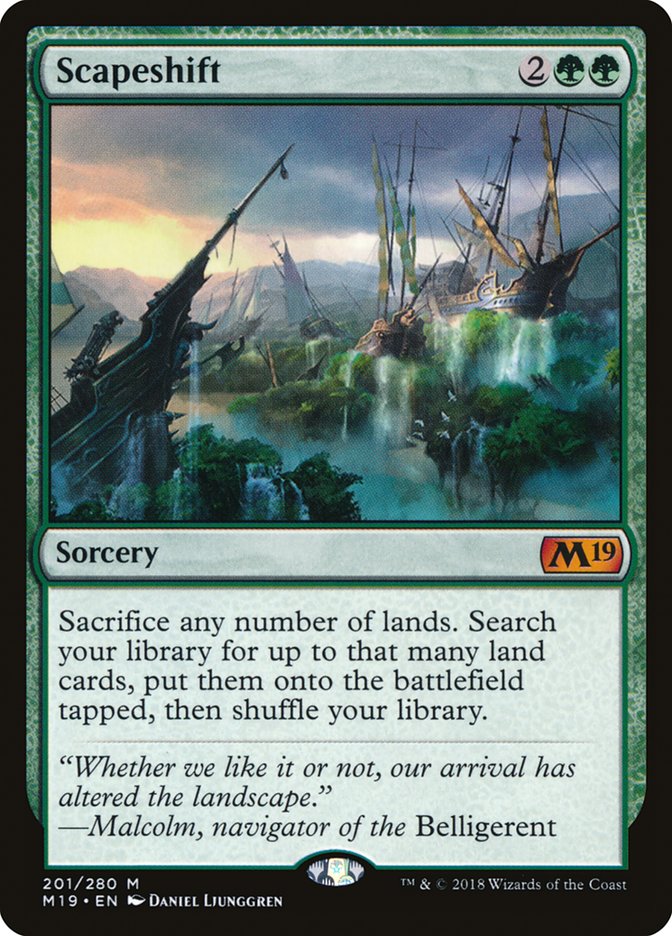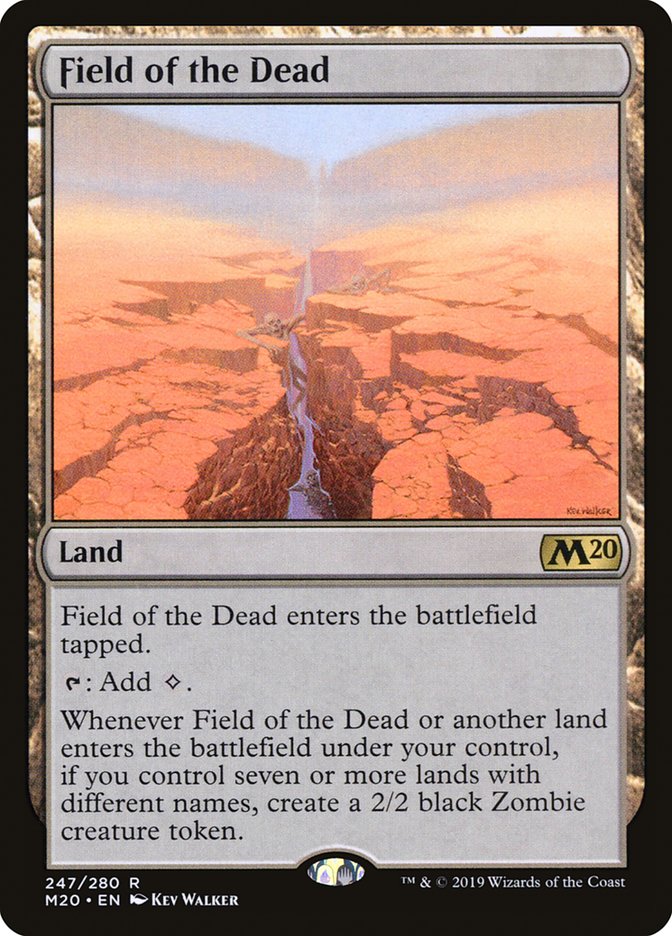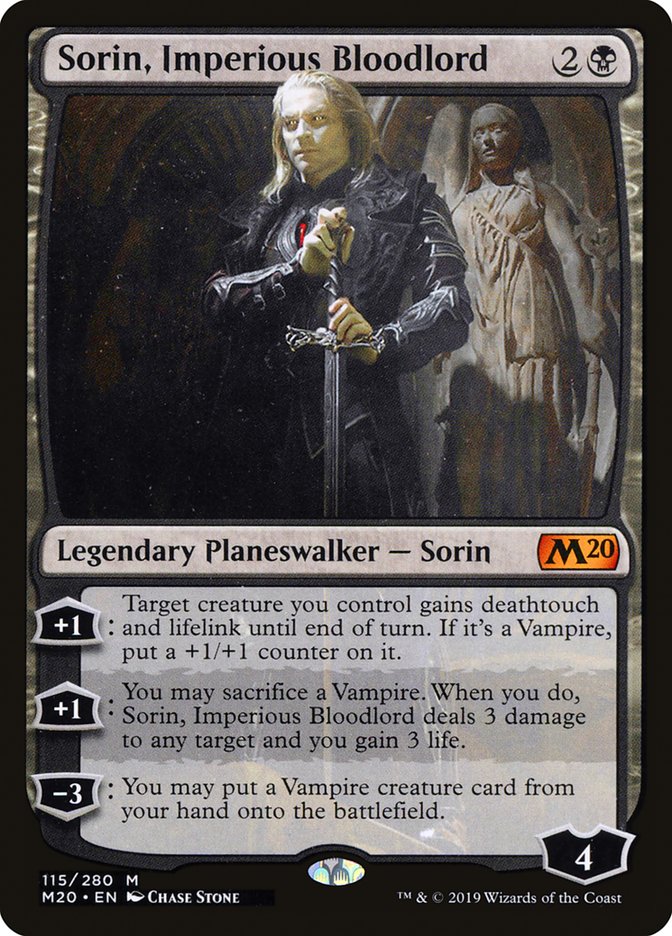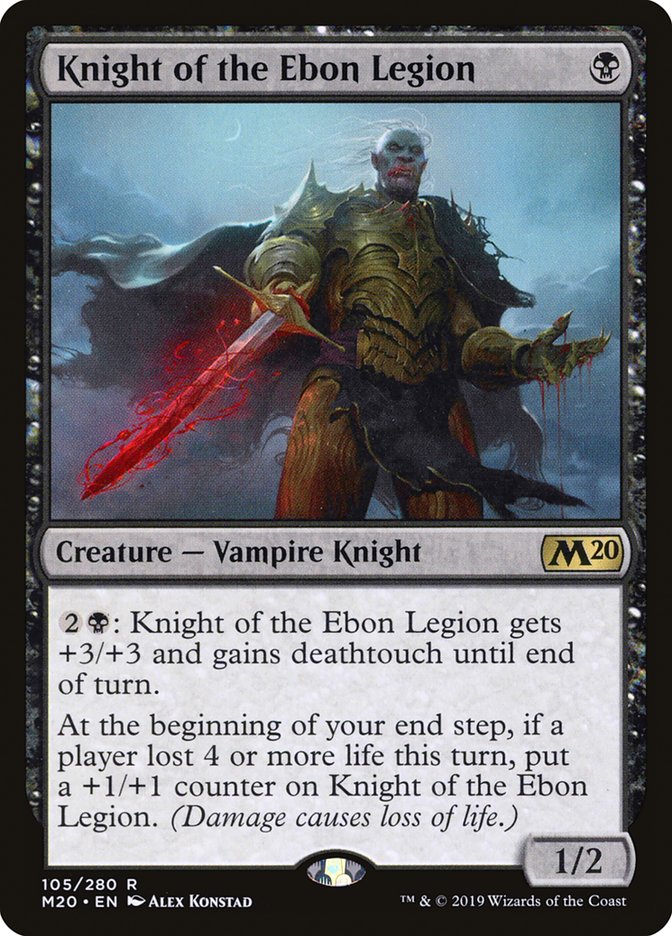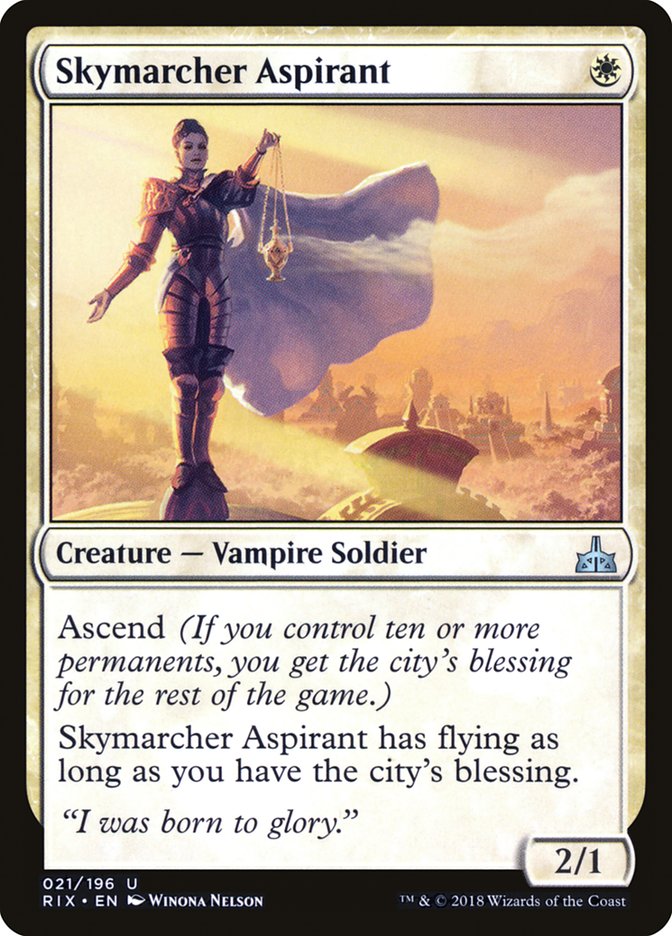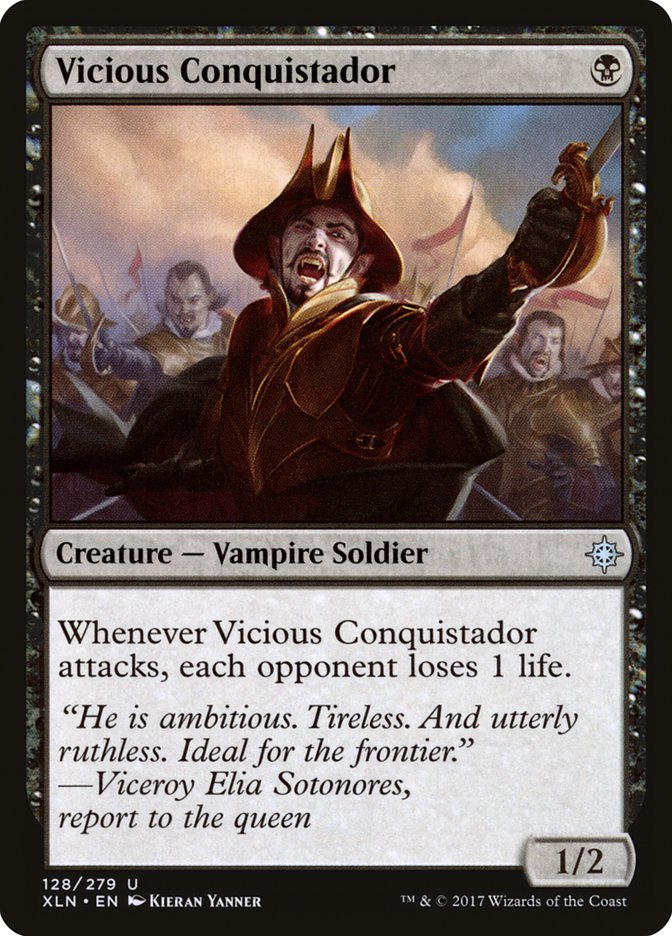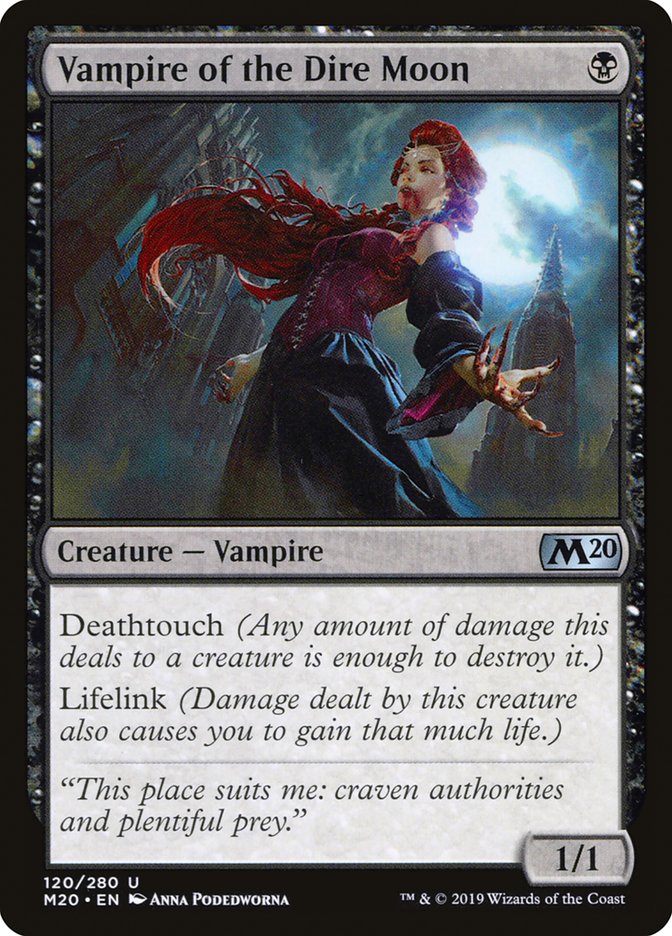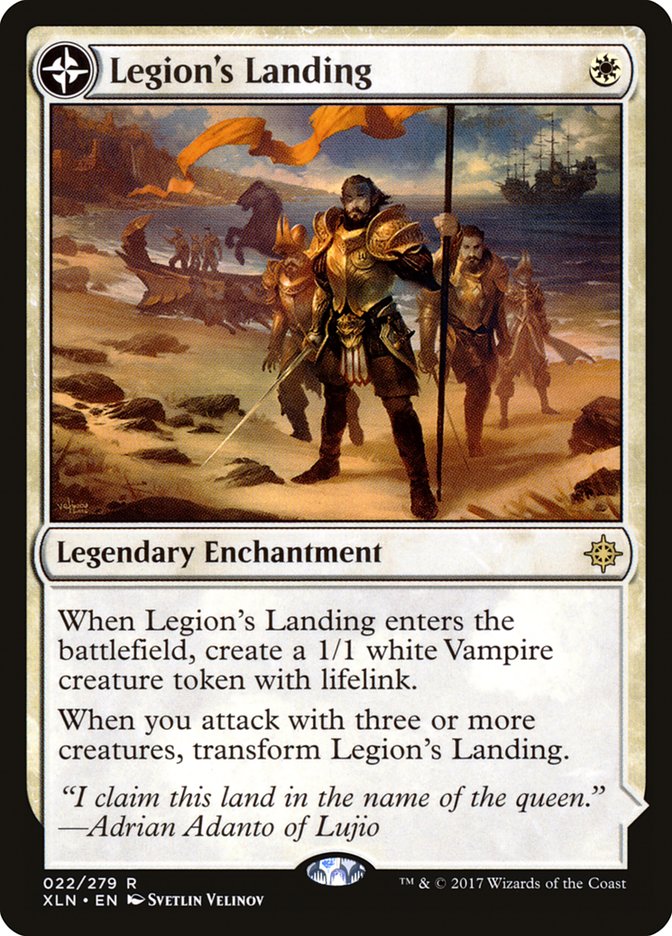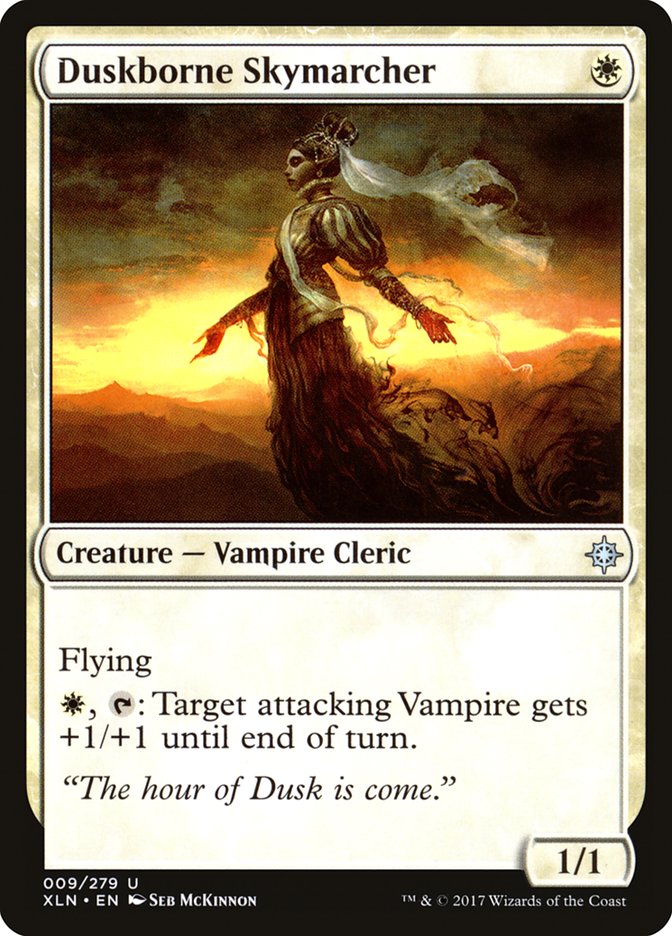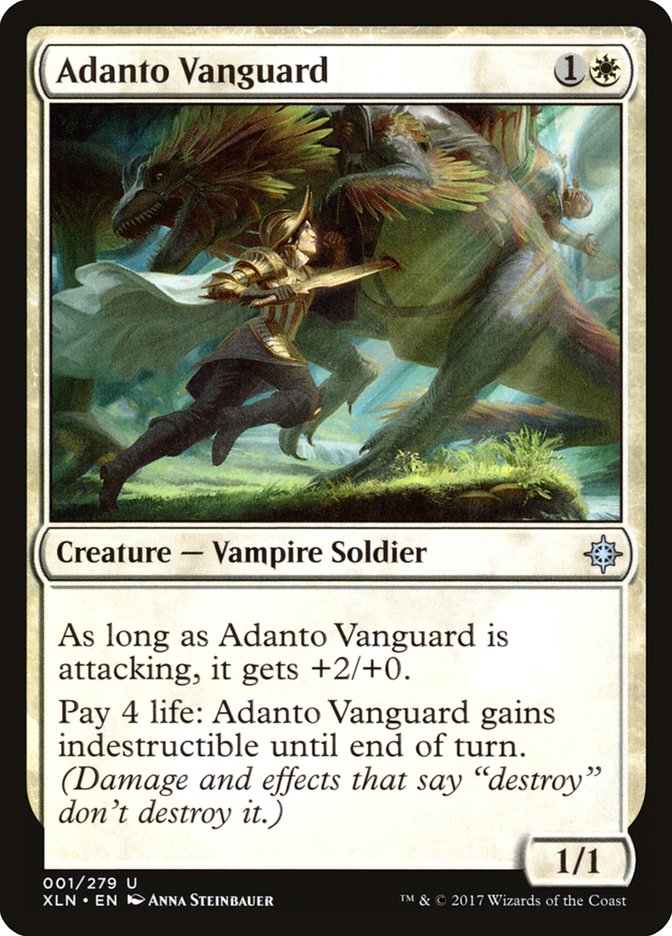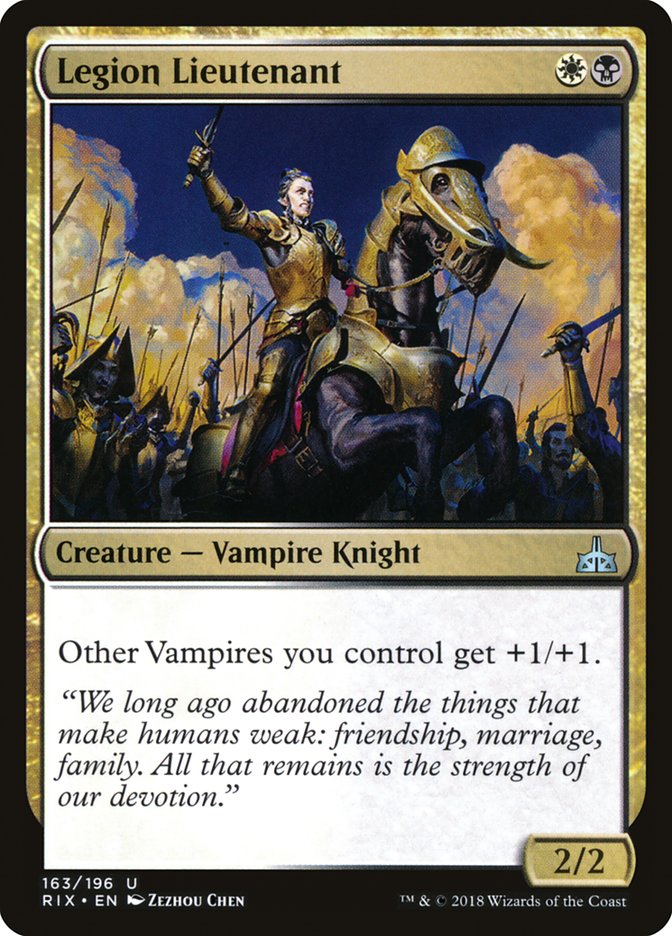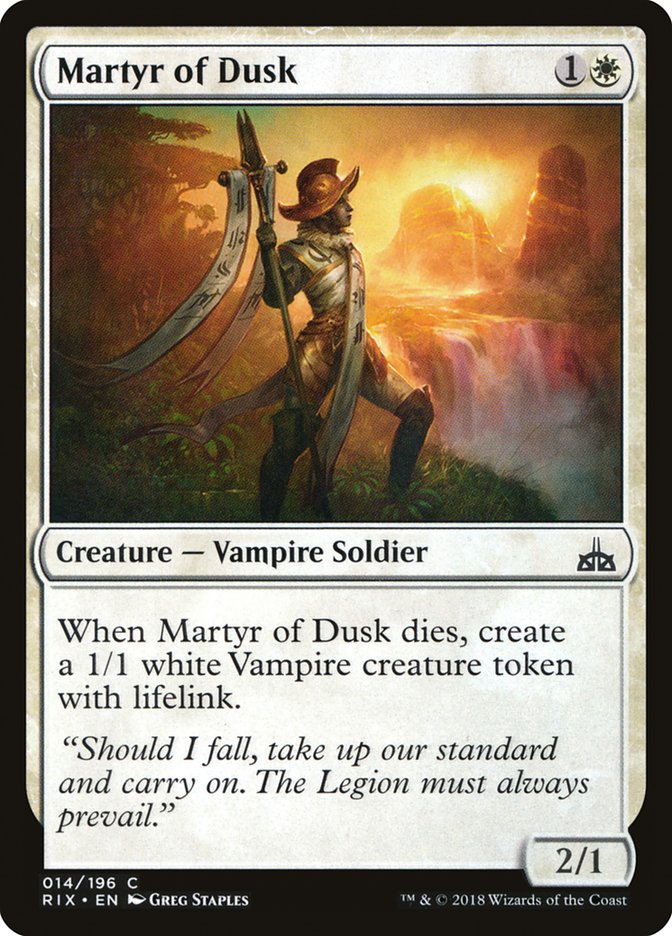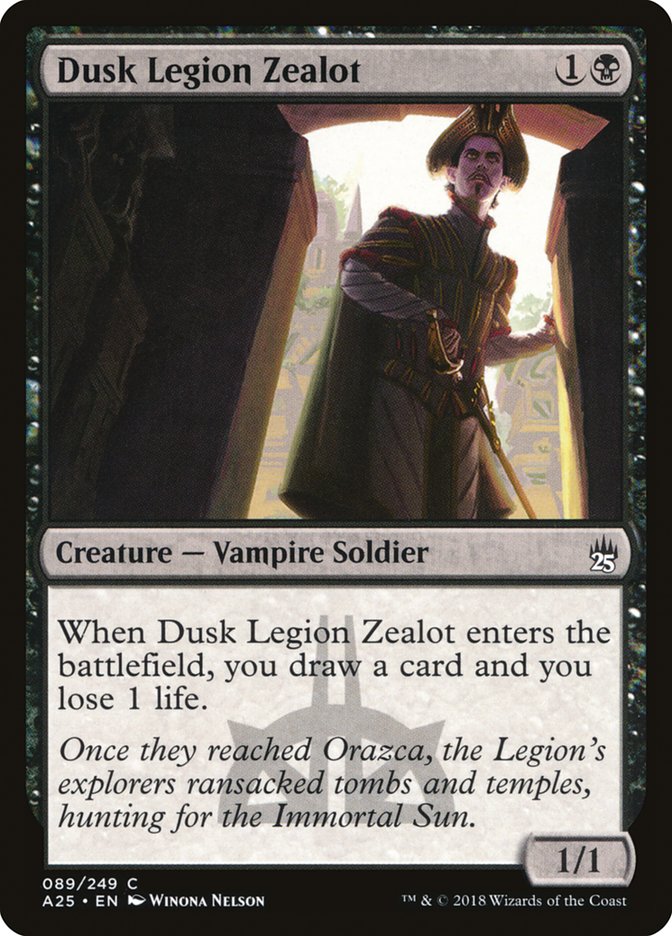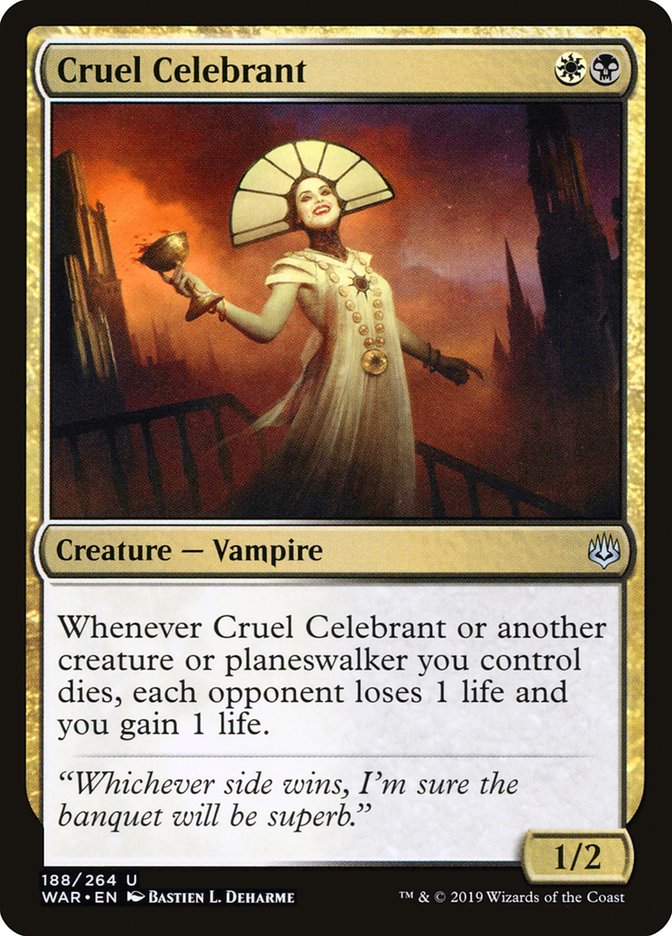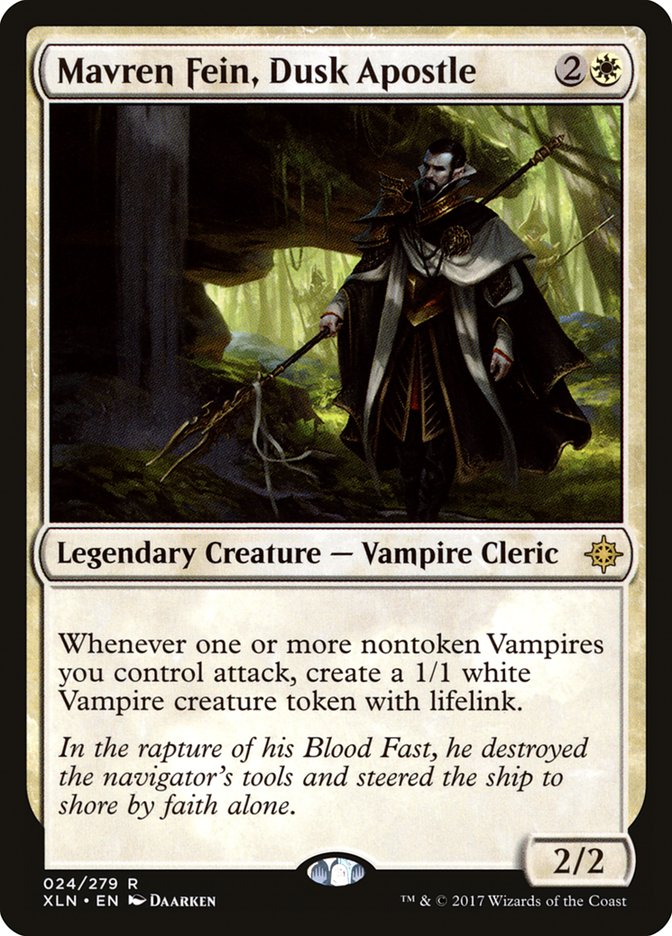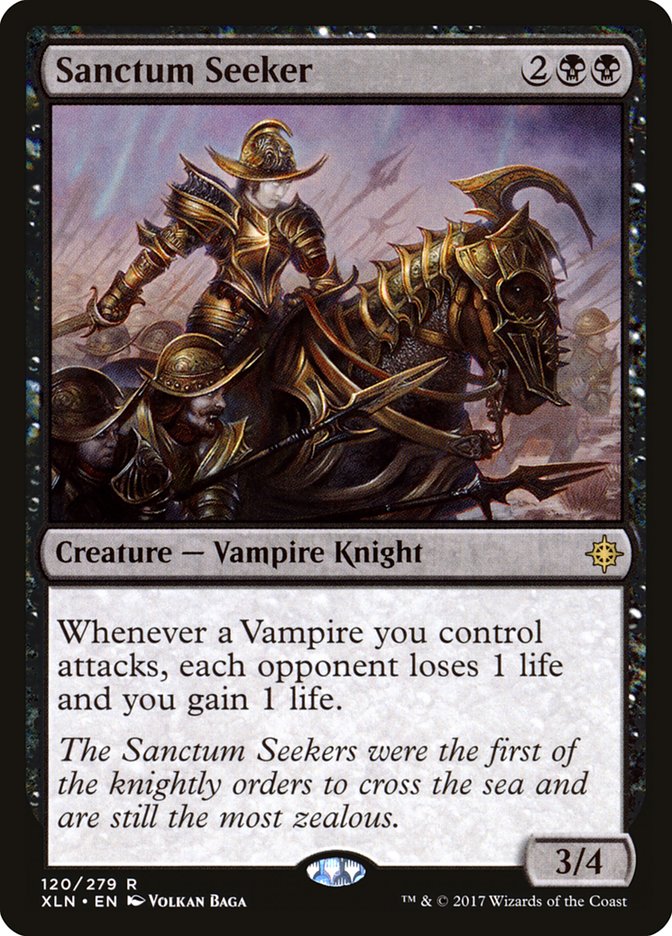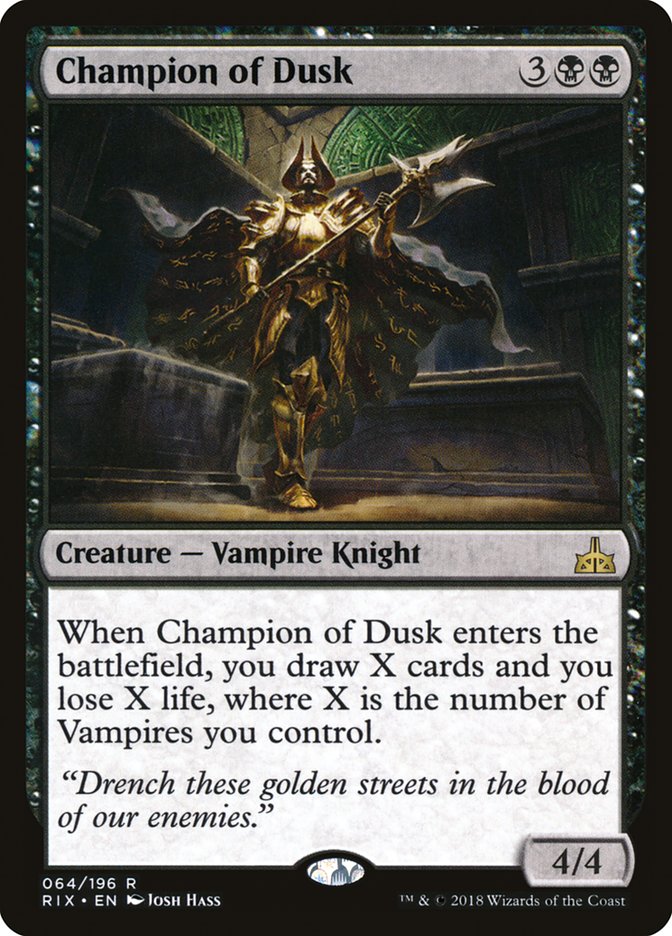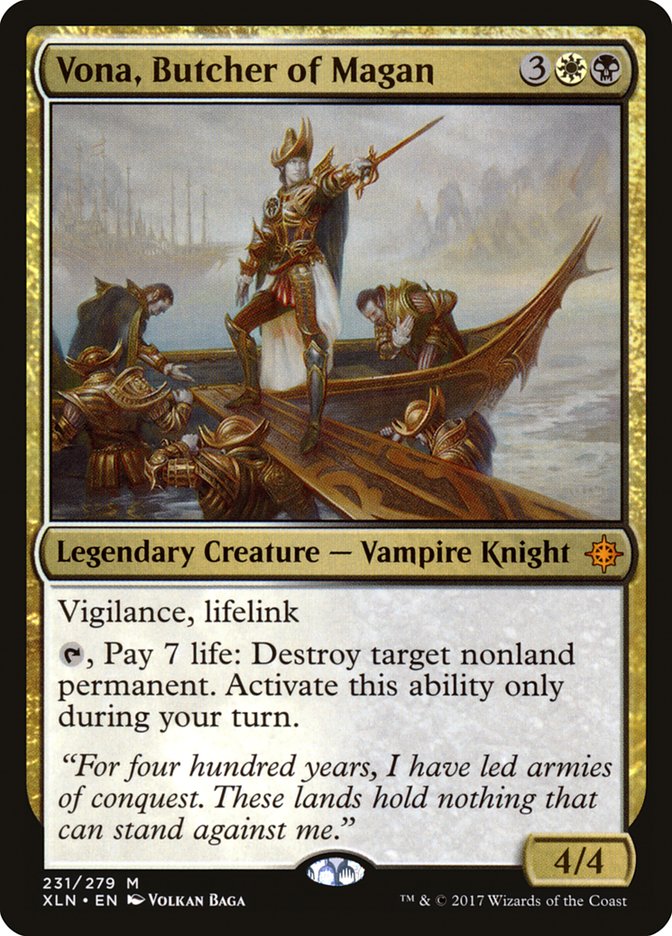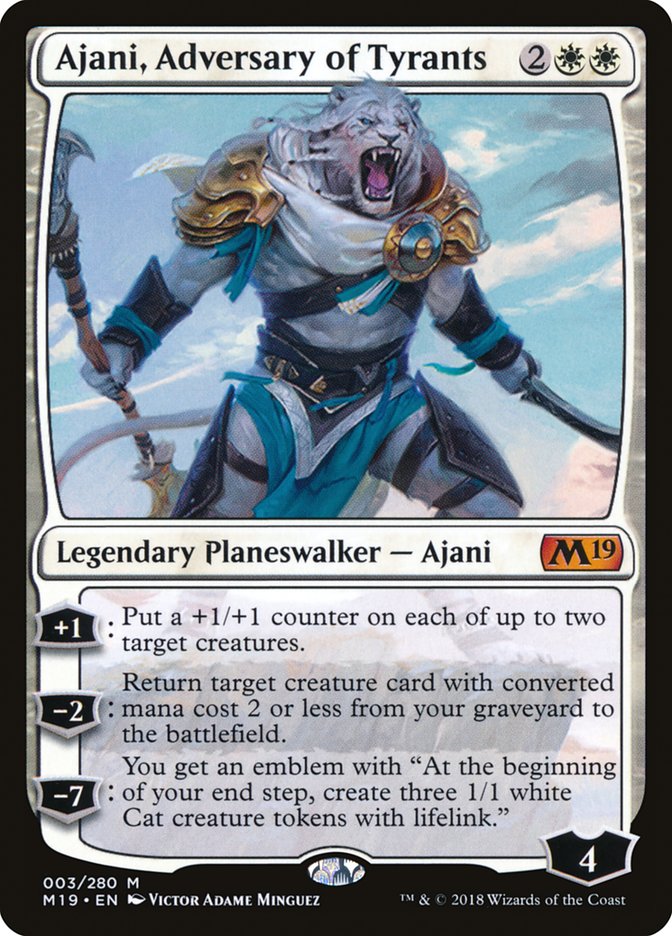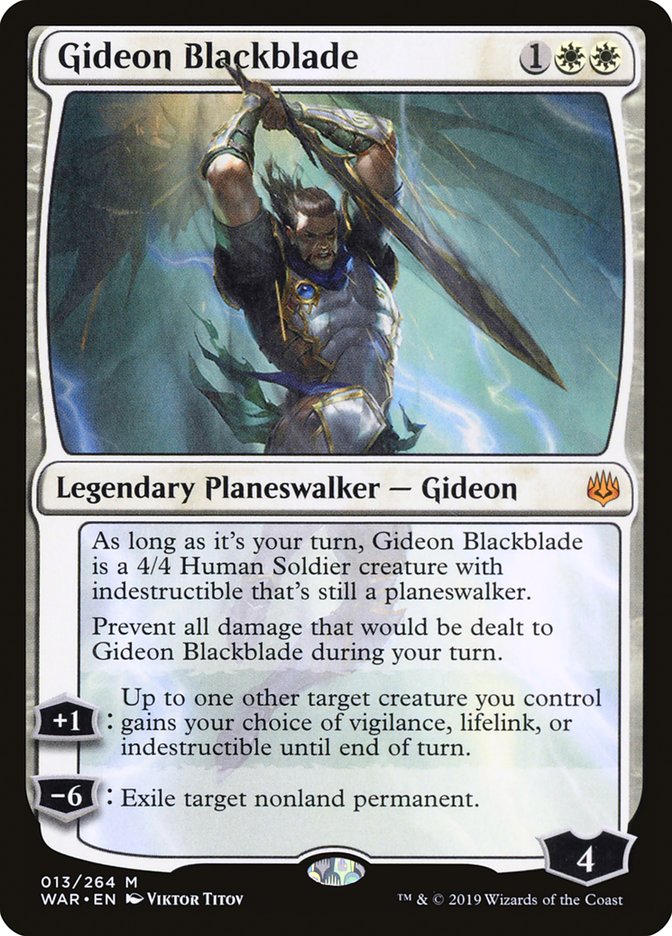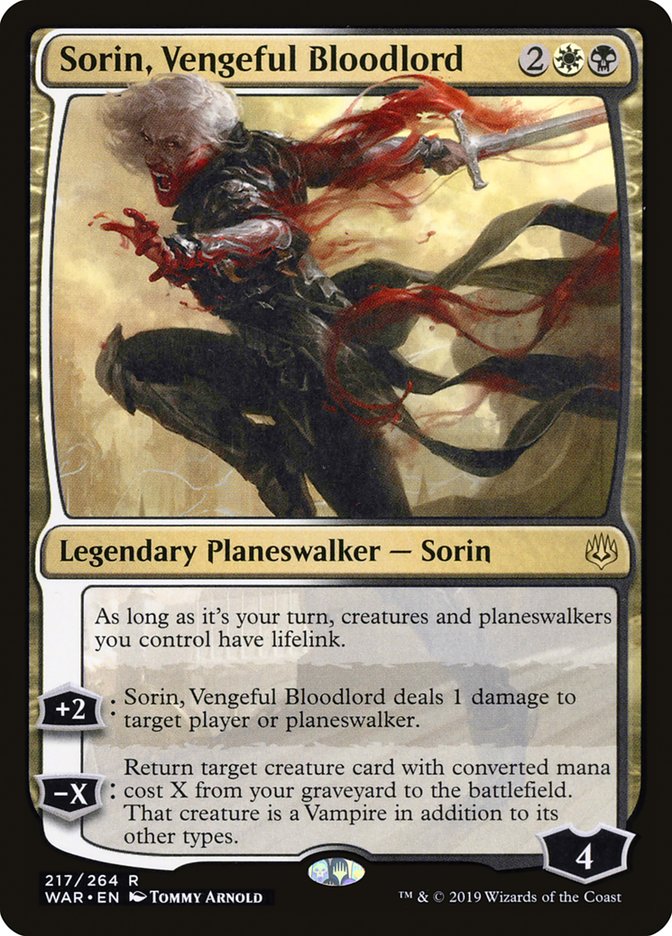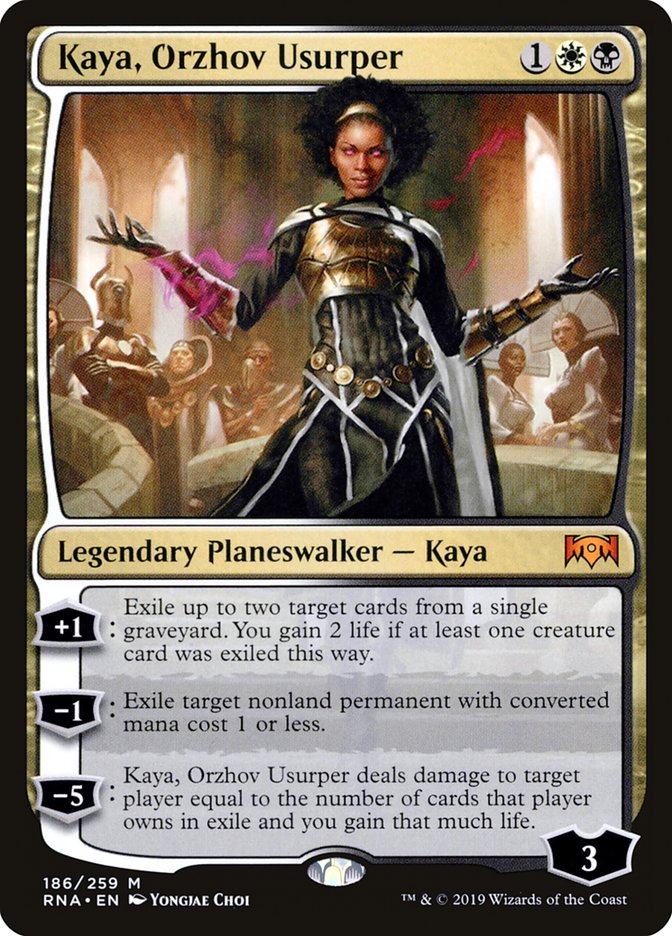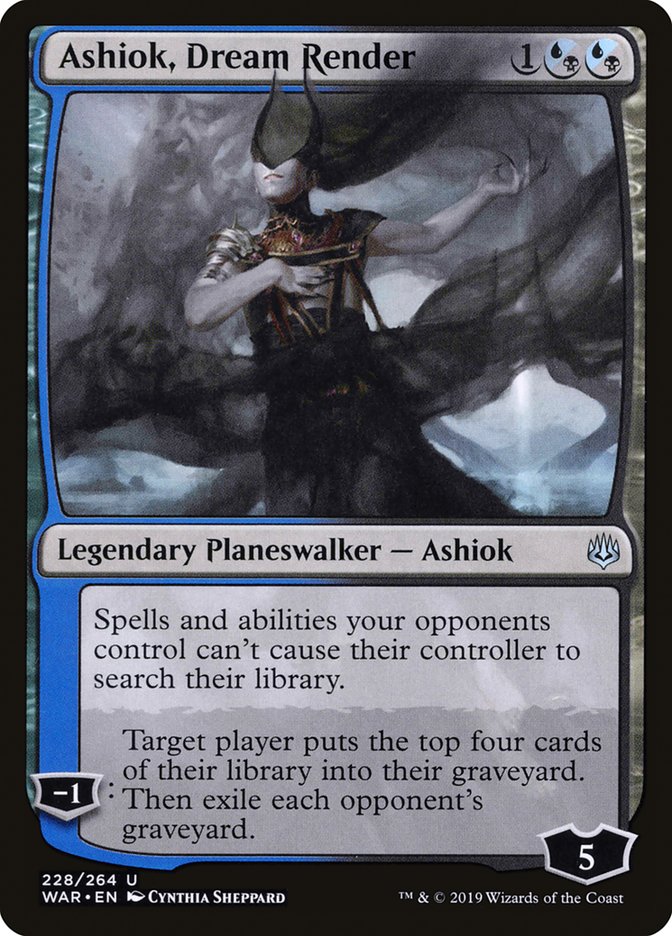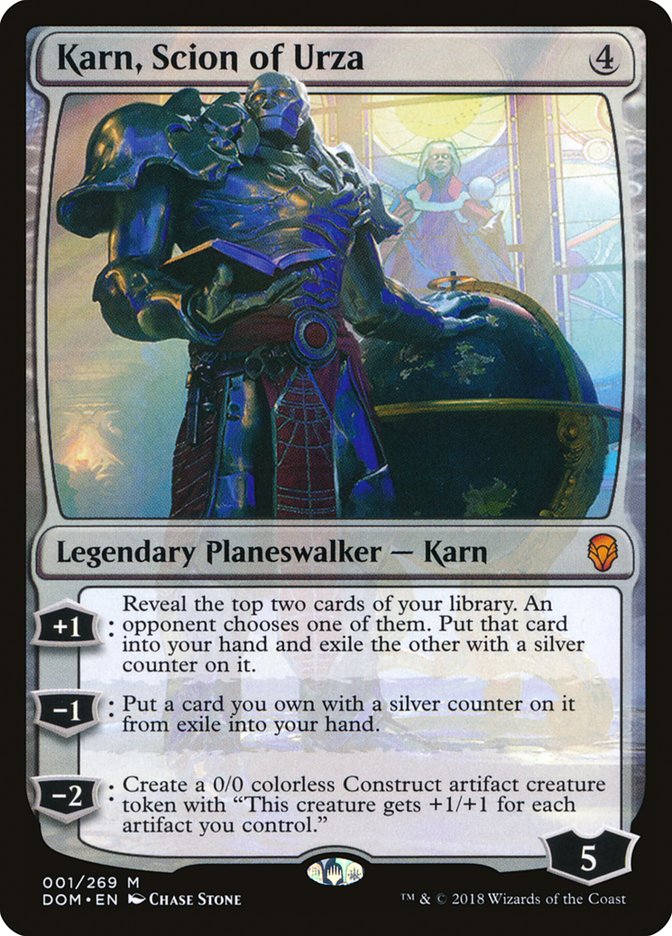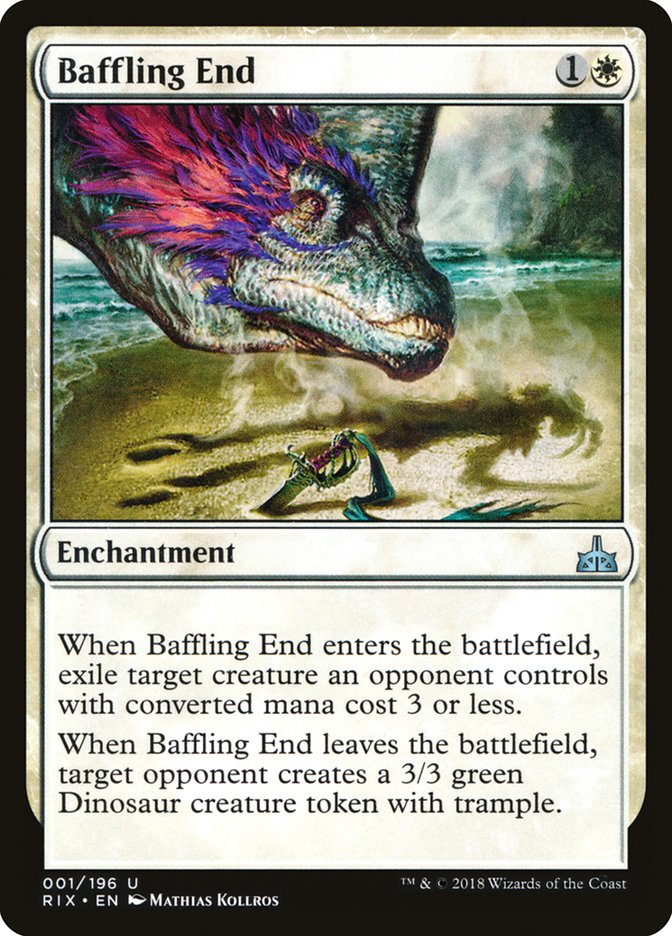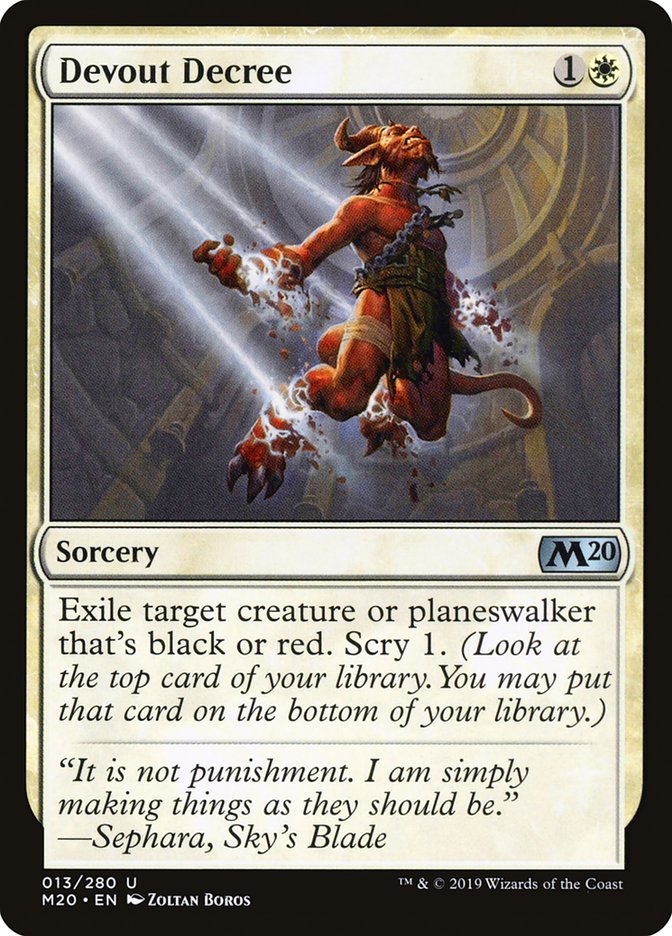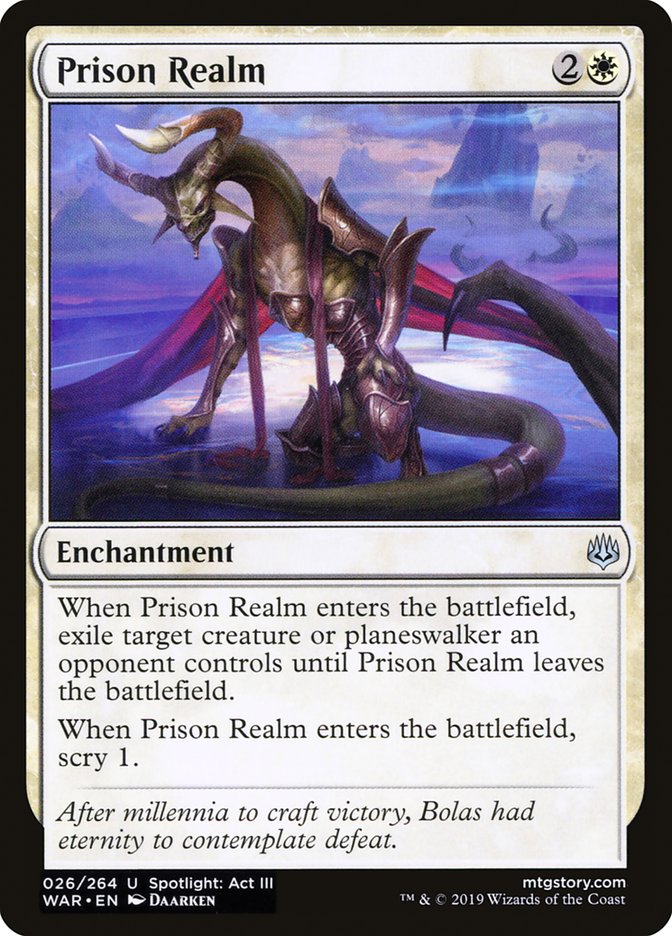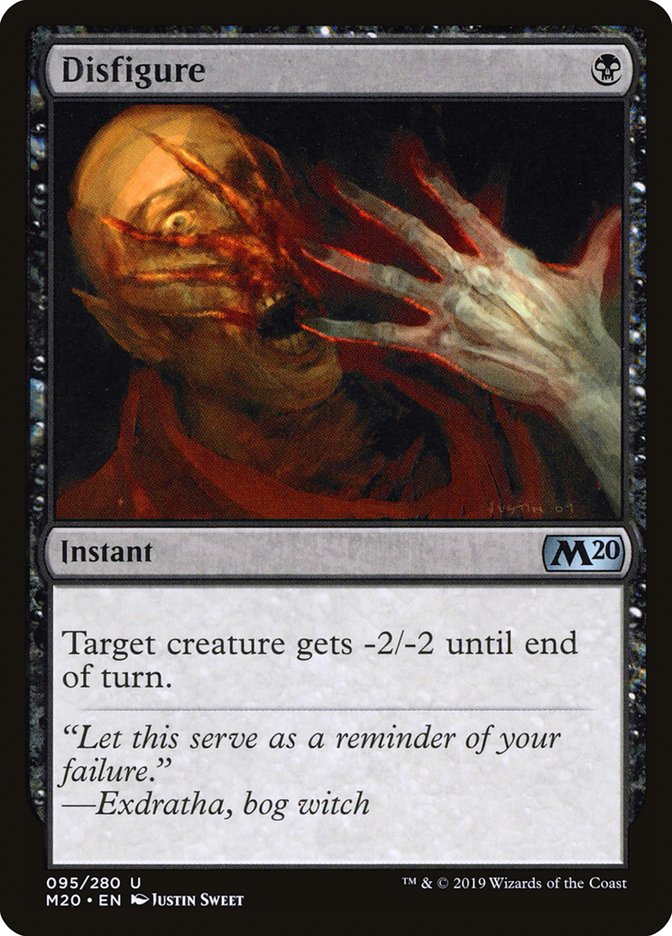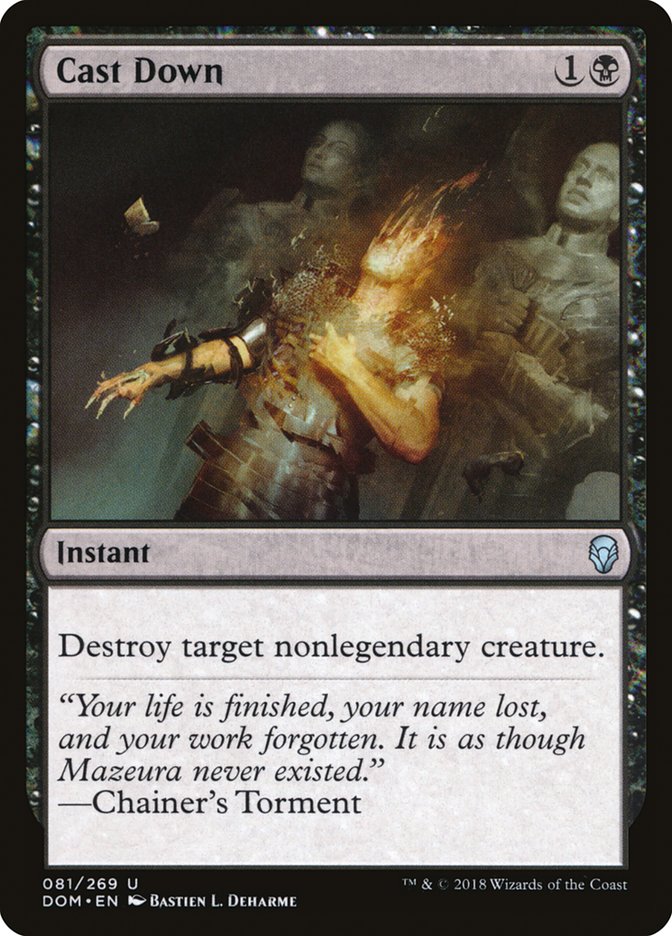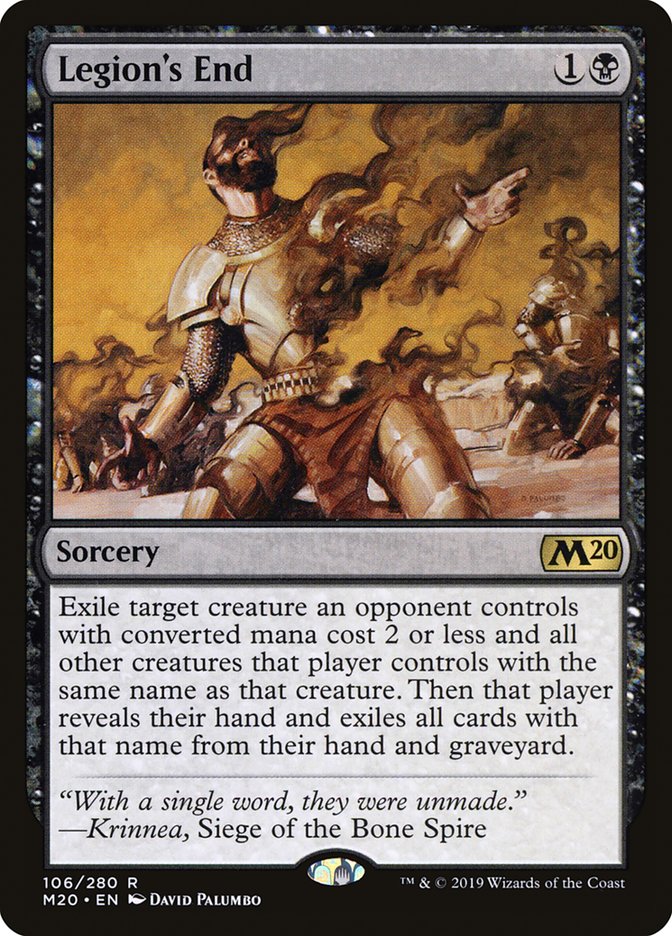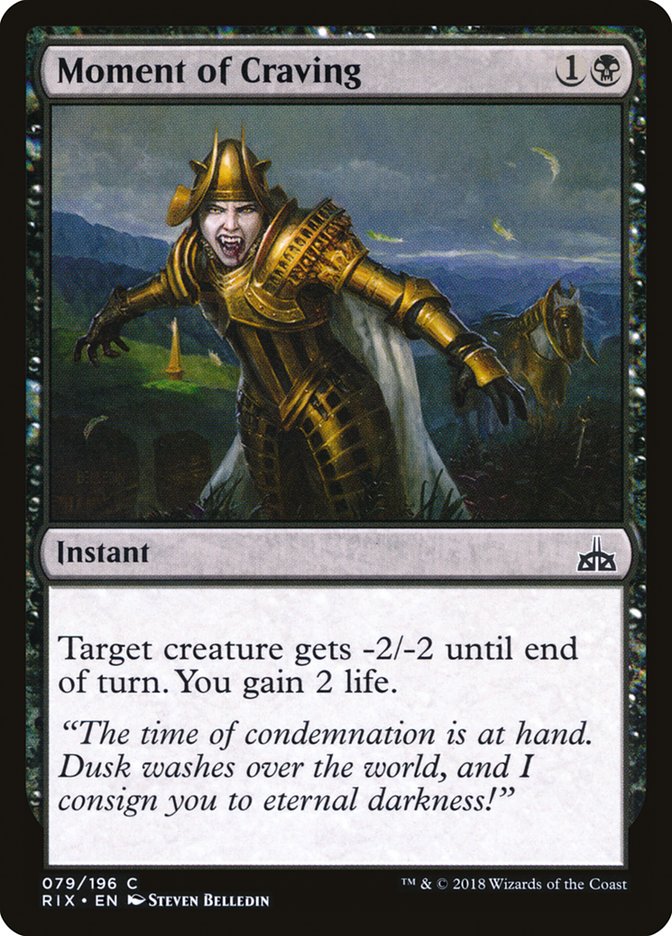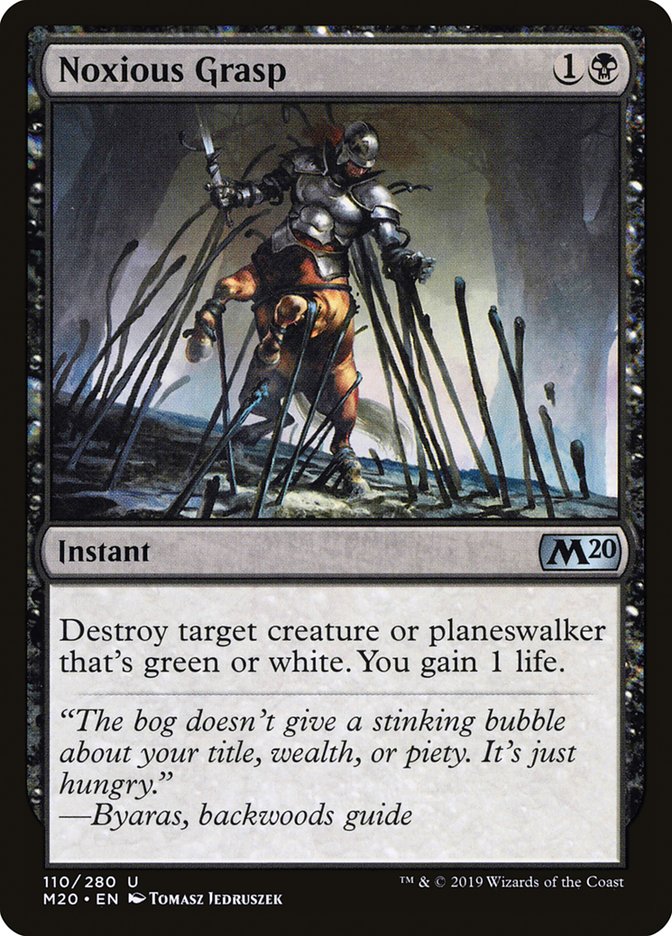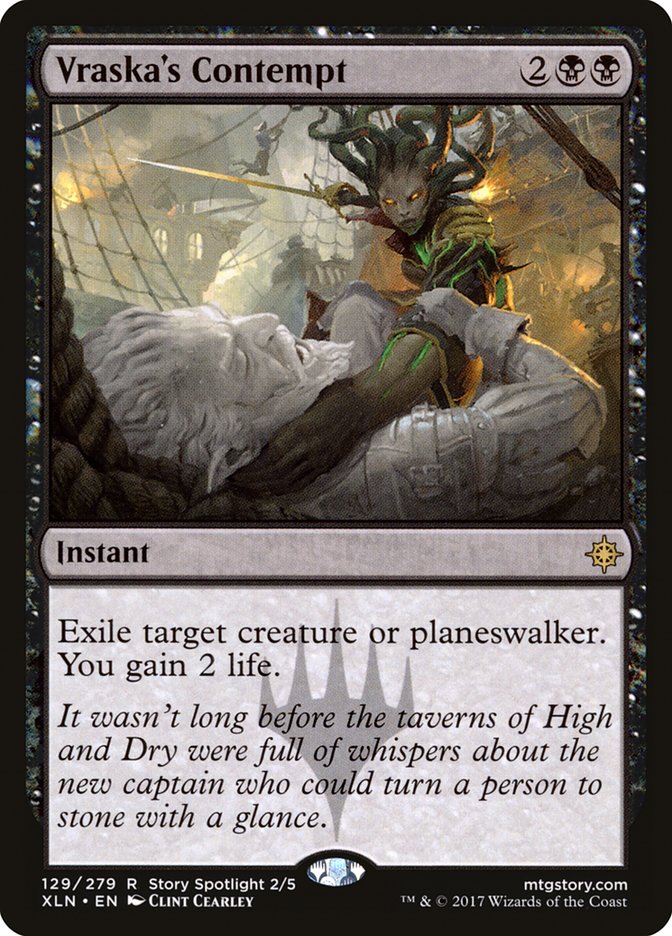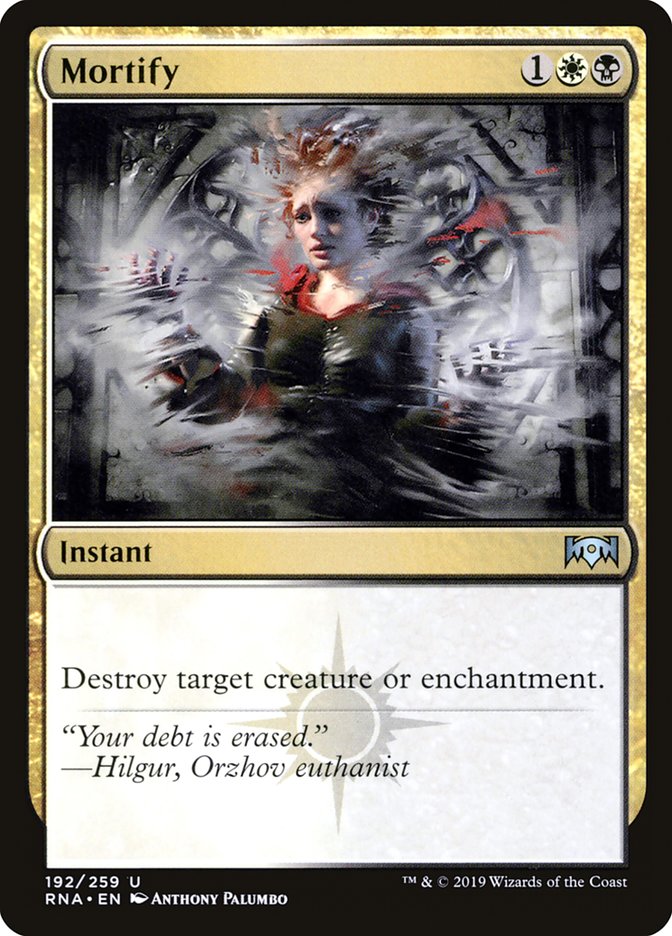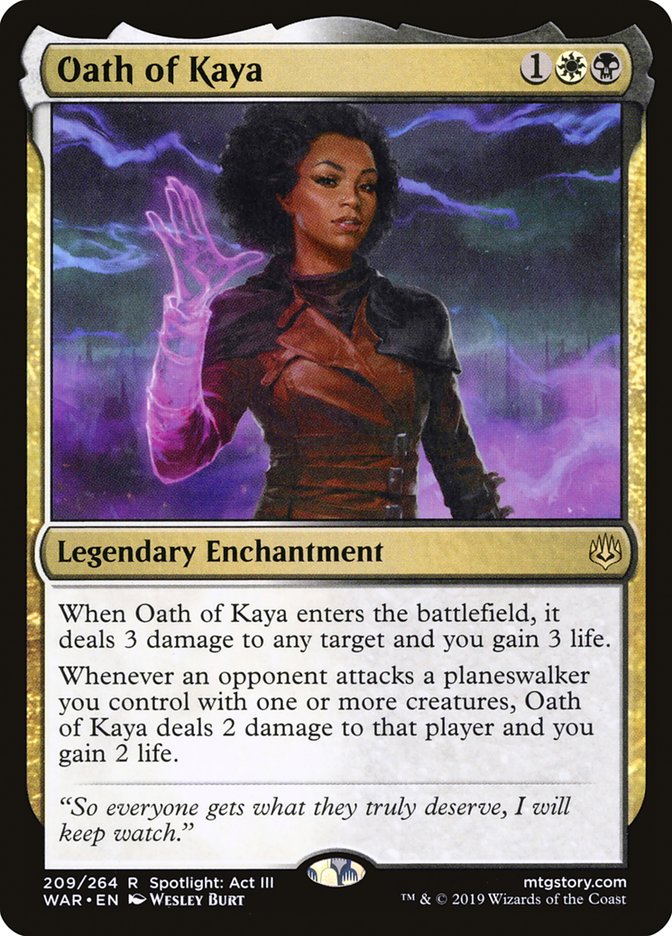Scapeshift, Scapeshift, Scapeshift. All anybody wants to talk about is Bant Scapeshift.
For a few weeks now, the land-based combo deck has sprung up out of nowhere to become the biggest deck in Standard, taking on all comers to cement itself as the deck to beat. Luckily, it isn’t that difficult to beat:
Early on in the Core Set 2020 Standard format, Zachary Kiihne made it to the semifinals of #SCGWOR with his take on the deck before losing a tight match to Ross Merriam. Despite being tied for the third-most-popular deck in Day 2, it was the only archetype to put two copies into the elimination rounds. After this performance, Orzhov Vampires fell off the face of the map.
Why?
Aaron Barich won the event with Mono-Red Aggro, which is historically a tough matchup for any sort of small-creature tribal strategy.
As the format has progressed, Goblin Chainwhirler has moved out of the format and people are simply trying to lean into putting 30 Zombies or so onto the battlefield. Surprisingly, that isn’t always an issue for Orzhov Vampires. You can just kill them while they’re developing.
Creatures (25)
- 3 Sanctum Seeker
- 2 Vicious Conquistador
- 4 Adanto Vanguard
- 4 Legion Lieutenant
- 4 Skymarcher Aspirant
- 4 Champion of Dusk
- 4 Knight of the Ebon Legion
Planeswalkers (5)
Lands (22)
Spells (8)
Sideboard

Last weekend I stumbled into the finals of a 200-plus-person online Mythic Championship Qualifier with the above decklist while trying to help Autumn Burchett playtest for their upcoming MPL matches. Over the course of the tournament, I beat Scapeshift three times, losing to it zero. I also beat up on a good chunk of the field and believe Orzhov Vampires to be the best deck to play for as long as people aren’t playing much Mono-Red Aggro.
Before diving into the intricacies of the deck, my most up-to-date list:
Creatures (27)
- 4 Sanctum Seeker
- 4 Vicious Conquistador
- 4 Adanto Vanguard
- 4 Legion Lieutenant
- 3 Skymarcher Aspirant
- 4 Champion of Dusk
- 4 Knight of the Ebon Legion
Planeswalkers (4)
Lands (22)
Spells (7)
Sideboard

The build itself is more streamlined than what I played in the MCQ but is ultimately very similar. On to the card choices!
One-Drop Creatures
Knight of the Ebon Legion is the easiest auto-include of the one-drop options. It attacks early, forces its way through medium-sized blocks, and scales as the game progresses. It even has the back-door trick of beginning to grow on Turn 2 with the help of Adanto Vanguard! Knight doesn’t care who lost four or more life, just that it was lost. So if it’s a matchup where life isn’t necessarily going to be a huge issue, paying four life to get the party started on Knight can be huge – especially against some green decks that play a good chunk of two-power two-drops.
Skymarcher Aspirant is great at providing early damage, and in resource-heavy games is good at breaking through battlefield stalls. The biggest drawback is that it can’t deal any damage through an Aboreal Grazer and can’t comfortably attack into something like Llanowar Elves.
Having the second point of toughness is great. Having part of its power be unblockable is great. The biggest issue with Conquistador is that it’s rarely killing anything in combat, so it needs a little help to actually hope to punch through a blocker.
That being said, the second point of toughness is nice, as it means that a single uptick from Sorin, Imperious Bloodlord is going to put it out of range of Shock and Cry of the Carnarium.
Vampire of the Dire Moon isn’t something that is great for the deck on its face – it’s only good at dealing a single point at a time, after all. The lifelink also takes a while to add up, being only one life at a time.
That being said, being a one-drop creature that can rumble with bigger creatures in the mid- and late-game is nice. Piotr Glogowski had these in his MPL deck this week as a nod to some of the mid-sized creatures he expected to be facing down.
While not technically a creature, Legion’s Landing is effectively a one-drop creature in how it operates. A one-drop creature that punishes stumbles like nothing else in Core Set 2020 Standard, Legion’s Landing lets decks like Vampires cheat on their mana a little bit while also inflating the lower end of their curve. Play four copies of this card.
Investing mana into Skymarcher’s ability isn’t really somewhere that this always wants to be. On top of that, the sizing of Vampires isn’t close enough to the things that they’re attacking into for such a small pump to end up being relevant. Cards like Thorn Lieutenant becoming prevalent could absolutely change this, but for now, Skymarcher belongs on the bench.
Two-Drop Creatures
One of the best attackers in Core Set 2020 Standard without any synergy considerations. When you look at how well this card plays with Vampires-matter cards and the aforementioned interaction with Knight of the Ebon Legion, the card becomes a slam dunk. Play four.
Tribal payoff card. Including the Lieutenant may seem like a no-brainer, but it isn’t always good to draw too many copies of. It wouldn’t shock me if a correct version of the deck only plays three copies of this card, as it’s fairly squishy and doesn’t do anything unless the deck is firing on all cylinders.
Old versions of the deck that cared more about having a million bodies on the battlefield were high on Martyr of Dusk. Despite looking like a card that would pair well with Sorin, Imperious Bloodlord, the planeswalker actually is the reason that cards like Martyr of Dusk aren’t as necessary.
Before Sorin, Sanctum Seeker was basically the only form of reach the deck had and that demands a pile of bodies on the battlefield. The other way to get the last few points of damage in is just to cast a bunch of Anthems and creatures with “Vampire” on the typeline. Martyr of Dusk played well to that strategy. Now that the deck has a different way of getting the last few points together, it doesn’t have to play cards that only exist for the sake of taking up space on the battlefield.
Dusk Legion Zealot is… fine. The biggest gripe that I have with the card is that a lot of times it feels like taking a turn off in the deck because the body is so easily invalidated. It makes things better in sideboard games because of how powerful some of the hosers in the format are right now. The biggest issue is that it’s frequently the first card I reach for when making cuts. There just aren’t enough grindy decks for Dusk Legion Zealot to make it for me.
Sorin gives the deck an avenue for reach that doesn’t demand having so many resources up front.
Bigger Creatures
Mavren needs to attack multiple times to really be worth it and dies to Shock. Not interested.
Sanctum Seeker gives the deck so much reach and allows it to continue attacking in the face of aggression. Having multiple copies of Sanctum Seeker feels like cheating. I’m a big fan of the full playset but shaving a single copy in order to lower the curve a bit is incredibly justifiable.
Champion of Dusk, along with Sanctum Seeker, is the biggest draw to playing a ton of replaceable one-drop creatures. It just gasses you right back up and rewards being able to immediately deploy the fresh cards to the battlefield.
Champion is also part of the deck’s nut draw:
- Turn 1: One-drop.
- Turn 2: One-drop, one-drop.
- Turn 3: Sorin, -3 Sorin, put in Champion of Dusk, draw four cards.
Champion of Dusk plays a couple of roles in the deck, but the ceiling of the card is just so high that it’s very hard to reasonably cut copies from the maindeck.
Vona is frequently just going to play a role similar to the card Lyra Dawnbringer out of the sideboard. The difference is that it has Vampire synergies and the upside of its activated ability can come up in mirror matches. It’s not quite good enough on the aggressive front to slide it into the maindeck, but it’s certainly a powerful enough card on its face to find a copy or two in the sideboard.
Anything that costs as much mana as Vona or Champion of Dusk is going to have to clear some pretty serious hurdles to make its way into this format’s little kid aggro deck, even if Sorin does a lot of work to make those cards more manageable.
Planeswalkers
He slices, he dices, he really does it all.
Sorin enables the best draws from the deck, is good at helping the deck apply pressure through the mid-game, and then provides reach in the late-game.
Did you know that his Lightning Helix ability is a plus ability? I reread the card four times the first time I saw it just to make sure.
It feels like most of the effects of Sorin are fairly obvious, so I won’t spend too much time here, but I will say that if you find yourself cutting Sorins from Vampires, it probably means that it’s time to put the deck down. Sorin is the biggest reason to play the deck.
The words I have to say for Ajani are not kind. The first ability on the card is fine, but hardly worth a four-mana investment in a deck that has mana as tight as this one. The second ability sounds like it would be good, but let’s examine the cards in the deck for a moment:
These creatures aren’t good at protecting Ajani and aren’t great to buy back during the mid-game.
Reanimating an Adanto Vanguard is somewhat unlikely, because the best ways to beat the card are to invalidate it on the battlefield or exile it. This means that it will either be an irrelevant body or won’t be in the graveyard to bring back.
Legion Lieutenant isn’t good against decks that are actively reducing the resources of players on the battlefield. You know, the matchups where Ajani gets the most mileage out of his minus.
I will concede that Knight is a fantastic creature to recur with Ajani. It’s reasonable for applying pressure or turtling up in front of Ajani, and its activated ability helps it translate into the phases of the game that Ajani matters.
That being said, one creature in the deck is not enough to play something as situational as a four-mana planeswalker in this deck. I fell for the card because it sounded good at a glance, and I’d literally be going to Richmond for the Mythic Championship if I had changed it to the one-drop or the Sanctum Seeker I wanted instead.
Maybe I’m just bitter.
Gideon is a great planeswalker against decks that won’t be sending much back at him. Most of the creatures in the Vampires deck aren’t very good at defending a planeswalker and Gideon’s abilities are tailor made for improving the combat step on your own turn.
Combining all this together makes it easy to see that Gideon is a great sideboard tool for this deck, but not something to prioritize finding room for in the maindeck.
Remember that rant about how underwhelming Ajani, Adversary of Tyrant’s second ability was?
Good talk.
Kaya could end up gaining some level of steam if the mirror match becomes frequent. The biggest issue I foresee with her is that the easiest cards to sideboard out in mirror matches are one-drops, so it isn’t too difficult to invalidate her.
That being said, she’s frequently going to be a two-for-one and exiling a Knight of the Ebon Legion or Legion’s Landing is going to be huge.
Sideboard card versus Scapeshift.
If the deck really wants a grindy tool out of the sideboard, Karn is a good way to attack from an angle that the maindeck wouldn’t. That being said, Karn isn’t very proactive, and the weak half of the deck is so weak that his +1 isn’t always going to be worth a full card.
Removal Options
Great sideboard card for the mirror and against Boros Feather. Feather conveniently dodges a good chunk of the removal from this deck that isn’t color specific and having an out to her is attractive. Baffling End is also a nice way to clean up Adanto Vanguard.
Good at dealing with opposing Sorins and Rekindling Phoenixes. There are other cards that Decree is going to be good against, but a base-black deck isn’t exactly going to struggle with killing traditional creatures most of the time.
A reasonable option if the deck just needs a cheaper Vraska’s Contempt, but Teferi, Time Raveler makes Oblivion Ring-esque effects scary.
Great against other aggro decks. Getting a mana advantage when killing something like Adanto Vanguard is incredibly attractive, and that’s not even the only thing that Disfigure kills. Shock has been great throughout its life in Standard and this is the black equivalent.
I wish I wasn’t considering this for mirrors, or committing space to it in an article, but Skulduggery is reminiscent of Fungal Infection of how it can swing small-ball creature combat. Skulduggery is just better when everybody is playing 1/2s.
Hard to say if it’s good enough but consider this planting the seed.
Even if there are several creatures that Cast Down can’t target, there are even more that it can. This format’s Doom Blade is just a reasonable catch-all that is wonderful at getting creatures out of the legion’s way.
The single biggest draw to Legion’s End is that it can answer all the tokens that Field of the Dead produces. It also happens to play well against opposing Vampire tokens, Hydroid Krasis, and Growth-Chamber Guardians. The card won’t always be great, but it is right now.
Similar to Disfigure, but this deck will care about paying an extra mana for the two life most of the time. Mana efficiency is more important in an aggro deck.
Debatably the most powerful of the new anti-color spells in Core Set 2020. Noxious Grasp being able to go after Hydroid Krasis and Teferi makes it occasionally come in against something like Bant Scapeshift, but the most attractive split-ability on it is that it can hit both Teferi, Hero of Dominaria and Lyra Dawnbringer.
This doesn’t even get into how powerful it is to tag Nissa, Who Shakes the World for two mana.
Don’t leave home without at least three.
Likely too high a mana cost for an aggro deck, but there are worlds in which Vraska’s Contempt could be worth it. Having a card that can deal with both Rekindling Phoenix and Nissa, Who Shakes the World has value.
Murder plus secret hate text against Wilderness Reclamation decks. Mortify is reasonable to play a single copy of but is so frequently going to do the job of a two-mana spell that it’s better to have a specific metagame in mind when registering the card or a desire to pay a bit extra for its flexibility.
If the metagame is in a spot in which Sorin’s Lightning Helix ability is strong, Oath of Kaya will be strong as well. The biggest draw to the card is that it’s good against other aggro decks and can also give the deck a bit of reach against decks without many targets for creatures.
That being said, it can be a bit expensive relative to its effect, and it isn’t great at fixing some of the problems that the deck can struggle with. I have moved away from it as a result.
Sideboarding
Rather than giving card-for-card in/out ratios, I tend to be in the school of thought that understanding why cards are brought in or taken out in a given matchup is more important for growing as a Magic player. On that note:
One-drop creatures get shaved against the grindier decks and against decks that have a good number of early blockers. Skymarcher Aspirant and Vicious Conquistador don’t always translate very well to the late-game and transforming Legion’s Landing is difficult against anything removal-heavy.
Adanto Vanguard isn’t very good at blocking. It also stinks against Goblin Chainwhirler and Merfolk Trickster.
Against most decks, the number of removal spells to play will hover between two and eight. Vampires is a synergy deck and needs a good number of its own cards in order to function. The amount of interaction will depend heavily on how important it is to break up what the opponent is doing.
For example, against a Feather deck removal is critical because it’s more or less impossible to beat Feather or Dreadhorde Arcanist sticking around for too long. On the other side of things, against Bant Scapeshift, having a couple of answers for Deputy of Detention or blockers would be good, but applying pressure is key.
Don’t be afraid to trim some of the more expensive spells in the deck during sideboarding. Sometimes early pressure is the biggest thing that matters and these cards don’t help with that. Sanctum Seeker in particular can be a bit awkward against grindy decks, as it doesn’t do anything when it enters the battlefield and doesn’t actually enter the fray until a phase of the game that’s easy for most reactive decks to operate within.
Trim copies in grindy matchups. If they have a bunch of stuff like Cry of the Carnarium, Legion Lieutenant will feel a lot like Runeclaw Bear when it’s topdecked later on.
Join the Legion
If Limited is your thing and you love a good combat step, Orzhov Vampires is absolutely the deck for you. The deck rewards long-term planning and sculpting gameplans around the rules of engagement that different archetypes set. It just takes some practice to figure out how to best posture against the decks of the format.
As long as the sun on Goblin Chainwhirler has set, Orzhov Vampires will be out in force. Get in early or regret not jumping in sooner.


